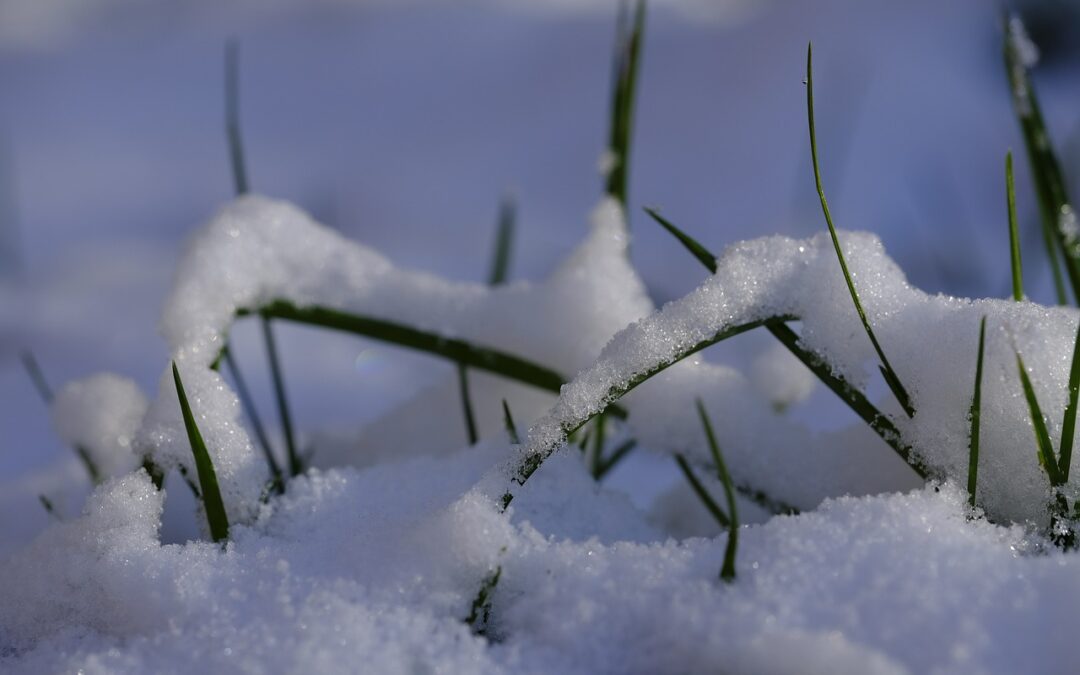Although the winter temperatures this year here in Northeastern Wisconsin are sometimes feeling more like our early Spring temperatures, the normal freezing temperatures of winter are still on their way. And, while the frigid temperatures and lack of sufficient sunlight can put quite a damper on our human spirits throughout the long winter months, they can be quite the buzz kill for our grasses too!

Here in the Fox Valley region of Wisconsin, the most common type of grass we use when growing grass for our lawns is a turfgrass called Kentucky Blue Grass. We especially use this type because it not only withstands the cooler temperatures, but it actually thrives in terms of growth and lushness when in cooler temperatures. Thus, it is relatively easy for our lawns to prepare themselves for winters properly when they are well-taken care of. This means the gras will go dormant throughout the winter and return to a healthy, green state in the Spring (and even healthier and greener if provided with the appropriate numbers of different elements – similar to the ways we use vitamins for our bodies). Kentucky Blue Grass is very resilient when it comes to the winters we are used to experiencing here in Northeastern Wisconsin. But… there can still be some cases where the grass does not bounce back as it should once winter is over when other foliage is starting to sprout. When this happens, it is known as ‘winter kill’, and there can be many different causes of this effect.

One cause of winter kill is known as Snow Mold, which is the opposite problem of Winter Desiccation. As we explained in the previous blog post, Winter Desiccation has to do with the lack of snowfall in frigid temperatures. On the contrary, snow mold has to do with too much snowfall prior to consistently freezing temperatures. This kind of weather typically occurs later in the fall season. When the ground is not quite cold or starting to freeze over yet, but the air temperature is just cold enough to create a heavy snow fall, the combination makes for moist conditions that can foster a variety of fungal diseases. These variety of fungal diseases can be grouped together under the term “snow mold”. However, the physical effects of snow mold may not manifest until early spring. If your lawn became a breeding ground for snow mold due to the circumstances described above, you may notice fuzzy or crusty patches covering the grass in portions of your lawn. These fuzzy or crusty patches are usually pinkish or grayish in color.
Since this type of winter kill is a mold, direct sunlight (UV radiation) is the most effective way to eliminate the mold. Snow mold usually dies as the sun and the breeze dry out the lawn in the early Spring. In the rare case that the sunlight does not seem to be helping, however, it could mean that the grass has been infected for a long time, causing the grass to die altogether. If this is the case, aeration and overseeding are highly effective restorative treatments for this kind of winter kill. In addition, there are some precautions you can take to prevent the chances of snow mold occurring:

- Make sure your lawn is clear of debris by raking, especially in the later parts of the fall season. To learn more about the different benefits of raking later in the fall, read this article.
- Aerate your lawn in the fall or spring to ventilate the grass and allow it to dry. Then, continue to aerate your lawn at least once every 2 years to maintain a healthy air flow to the root systems. To learn more about the benefits of aeration, read this article.
- Overseed by applying grass seed where necessary. After your lawn has been aerated, give the plugs of dirt that were pulled up a chance to dry out, which should take about a week or sometimes two. Once dry, disburse the dirt throughout the lawn with a lawn mower and then overseed the areas that experienced damage from the mold. Our company does not do overseeding at this time, but if you are seeking to outsource this step, let us know by clicking here and we would be happy to give you our personal partner recommendations. Or, if you would like to overseed on your own, here’s an article that could help you through the process.

